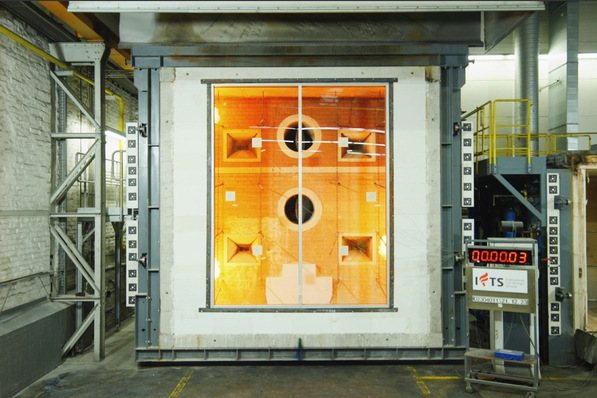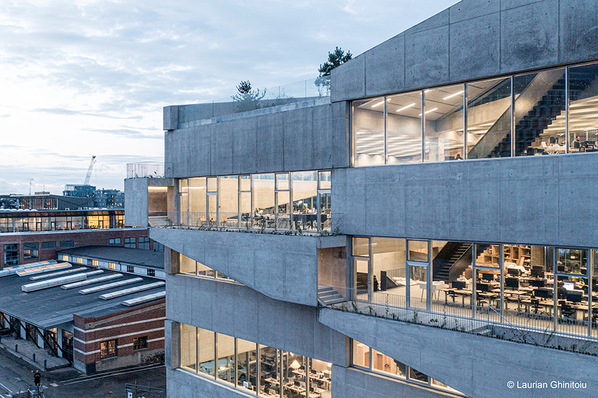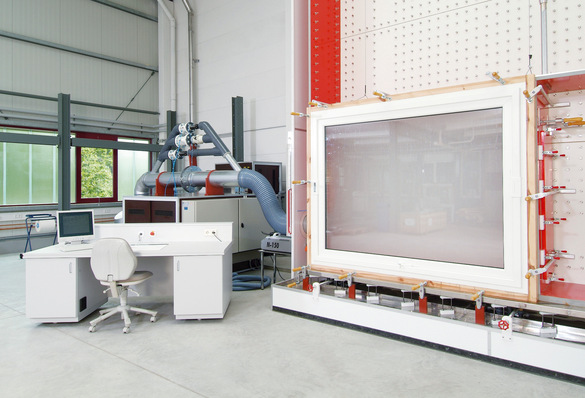The 204-meter-high skyscraper “8 Bishopsgate” is a 50-storey office building in the City of London. Developed for Mitsubishi Estate London, the building achieves the highest energy efficiency rating of “EPC A” and has been awarded the “BREEAM Outstanding” certificate. Photovoltaics on the roof provide sustainable electricity and the double-shell active façade is equipped with AGC facade glass and a light-controlled shading system.
The double-skin active façade minimizes the building's carbon footprint and air conditioning needs – with a special steel skeleton, sun shading and low-e glazing from AGC Interpane Architectural Glass and light-controlled shading.
The building's stepped profile maximizes rentable space while protecting the cathedral's prospects. To enhance the visual stacking effect, each block cantilevers on the west façade and is slightly rotated to match the different building heights and shapes of the surrounding cityscape – which is why the building has already been given the nickname “Jenga”.

Dirk Lindner
A floor-by-floor ventilation system enables the air flow to be adjusted as needed throughout the building using CO2 sensors. Around 60 per cent of the annual heating demand is covered by reusing waste heat from the cooling system.
ARUP engineers used analytical simulations to design each component for its individual load, reducing the weight of the steel frame by 25 per cent – saving 5,000 tons of CO2. A further 140 tons of CO2 were avoided by optimizing beam spacing for the higher floors.
The engineers also developed a new type of foundation that requires only about a third of the piles to transfer the large vertical load into the ground – saving two months of construction time and 3,000 m3 of concrete.
Intelligent glass facade for comfort and energy efficiency
Each of the high-rise's main architectural elements has its own character. The lower structure was clad in natural stone with large square windows, while the middle and upper blocks were fully double-glazed.
In order to regulate the intensity of solar radiation and glare, the planners decided on a 200 mm deep Closed Cavity facade with automated blinds on the inside. Roof sensors determine the intensity and position of the sun throughout the day and adjust the shading variably, which significantly reduces the cooling load of the building.
These glass facades were equipped with a project coating (ipasol bright white LR) and iplus thermal insulation glazing from AGC Interpane Architectural Glass (www.agc-interpane.com) according to individual requirements.
Up to the middle building height, where the second block ends in a spacious roof terrace, mainly “iplus 1.0” thermal insulation glazing is used, which provides daylight (TL = 78%), protects against the building cooling down (Ug = 1.0 W/m2 x degree Kelvin) and allows solar energy gains when the sun is low in the sky.
Above, in the third segment of the stack, impact-resistant panes with the design coating “ipasol bright white LR” form the outer shell of a Closed Cavity facade (CCF).
The very bright functional coating transmits a lot of visible daylight (TL = 83% in a monolithic LSG structure) and reduces reflection by about a third compared to a standard coating with ipasol bright white. The inner part of the CCF is formed by an iplus 1.1 thermal insulation glazing in a two-chamber structure, which is optimized for high daylight transmittance.

Dirk Lindner
Spectacular view over London
The top block of the building, which houses the public viewing gallery “The Lookout” with spectacular views over London, was also glazed with this combination – but here, for maximum color neutrality, in combination with low-iron Clearvision basic glass. AGC Interpane Architectural Glass supplied about 20 different product combinations for the building, some of them with full-surface enamelling, to ensure the best solution for energy efficiency, comfort and aesthetics in the different areas, depending on the requirements.
Cradle to Cradle glasses from AGC
All basic glazing products of the ipasol and iplus family have been awarded the “Cradle to Cradle” sustainability certificate in bronze and are also available as “low carbon” variants as a result of the AGC Group's new CO2-reduced production – with the corresponding EPD.
With this product, architects and planners can improve the environmental certification rating of their buildings according to DGNB, LEED, BREEAM, etc.
Project details
Location: 8 Bishopsgate, London
Client: Mitsubishi Estate London
Architects: Wilkinson Eyre
Structural and MEP engineering: Arup
Steel construction: William Hare
Facade construction: Scheldebouw
Facade glass: AGC Interpane
Glass products: ipasol bright white LR and iplus 1.0 from AGC Interpane Architectural Glass
Another interesting project in London with an AGC Interpane glass: The Scalpel

Dirk Lindner














